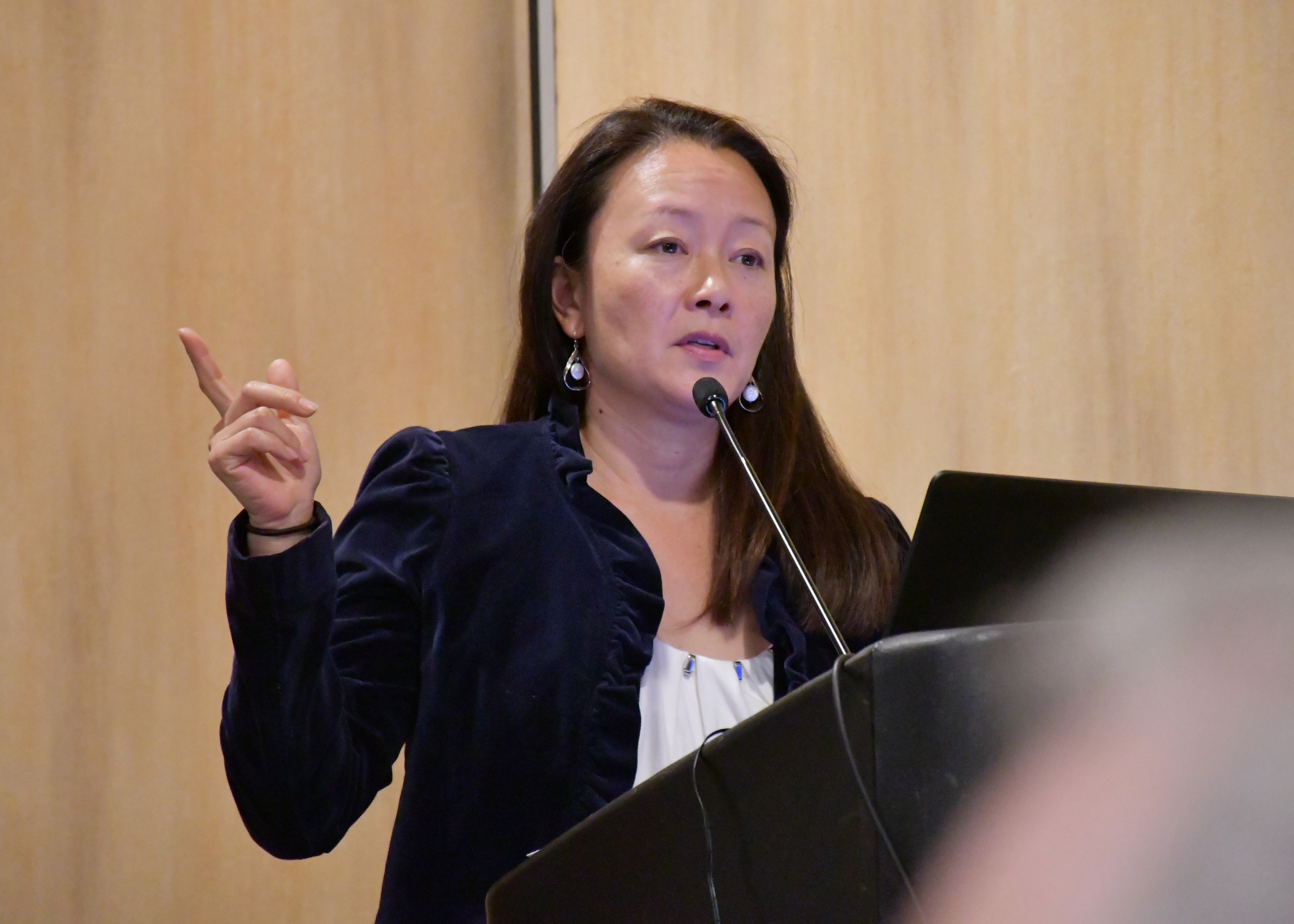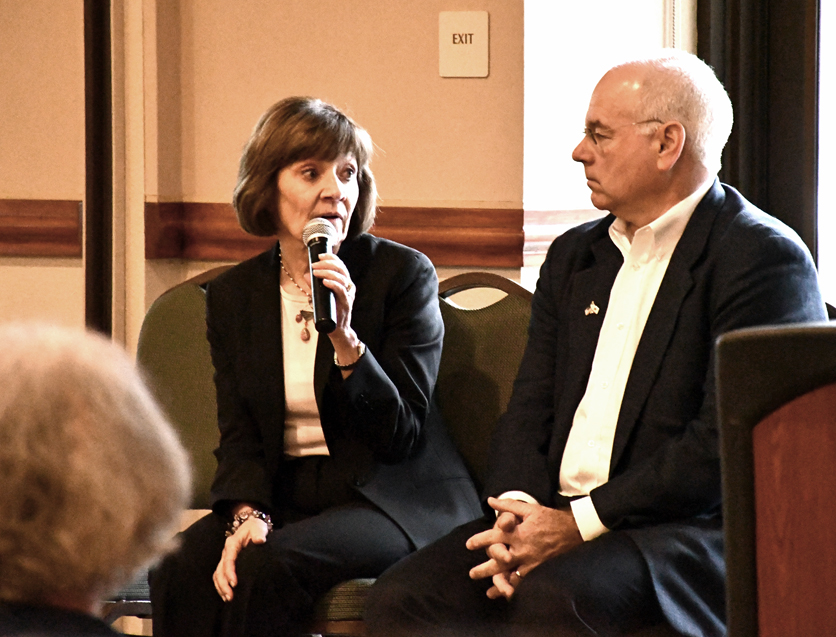As the state prepares for an eventual slowdown along with costly climate resilience investments and the economic impacts of sweeping new regulations, agencies are looking to new revenue sources to supplement programs. One option being quietly explored is specialized trading markets, for both water trading and sustainable agriculture programs.
A state-sanctioned water trading market would soften the blow felt by the Sustainable Groundwater Management Act (SGMA), which is set to begin implementation in two days. It also buys time for more funding to open up for water storage and conveyance projects, as agencies dole out existing bond money and Congress weighs new infrastructure bills.
In his initial budget proposal for 2020, Gov. Gavin Newsom allocated $60 million to support such water trading pilot projects, along with water banking and land use planning projects.
Farmers in Ventura County have now launched the first open water market under SGMA, according to Sandi Matsumoto, an associate water director for The Nature Conservancy. Faced with a 40% cut in groundwater use, the farmers of Fox Canyon were looking to develop a flexible market that could adapt as cutbacks deepen. It officially opened on Jan. 6.
“We believe the market can be one way to help farmers manage the transition and also can be protective and maybe even beneficial to the environment,” Matsumoto said this week at the annual conference for the California Irrigation Institute.
The Rosedale‐Rio Bravo Water Storage District is also experimenting with a water trading platform that General Manager Eric Averett likens to Craigslist. It simply connects a buyer to a seller, he explained. They then complete the transaction outside of the platform through the district.
With climate-smart agriculture programs being trimmed again this year, a carbon farming market is also looking more appealing to the administration. Gov. Gavin Newsom gave “a haircut” to the whole suite of incentives programs for emissions reductions, as the Department of Finance anticipates cap-and-trade revenues to begin to decline.

Sandi Matsumoto, associate water director for The Nature Conservancy
“We have known from the beginning that there would come a time when cap-and-trade revenues would plateau and then start to go down because of fewer credits,” CDFA Sec. Karen Ross told Agri-Pulse in a recent interview. “If we became overly dependent on only cap-and-trade dollars, we would lead people off to not the best sunrise.”
To add more long-term certainty to these programs, the administration is diversifying its revenue portfolio, with new proposals for both a climate and water bond and a low-interest loan program for climate mitigation and adaptation projects. Newsom is also looking to public-private partnerships to replace some of that funding.
“It's important we think about the role of the public sector not as a place where there’s endless streams of money,” said Lenny Mendonca, who directs Newsom’s economic development office, in discussing the loan program at an agtech forum in Woodland last week. “This is about the government being a smart partner in catalyzing investments.”
One of those partnerships took place in May, as the Air Resources Board teamed up with the nonprofit organization Perennial Farming to launch the Restore California program for carbon farming. It works by leveeing a 1% voluntary surcharge on diners at participating restaurants. The fund supports farmers in converting to carbon sequestration practices like cover cropping and composting, which are also supported under CDFA’s Healthy Soils Program.
"Climate action would either be funded by the public or by the government,” explained Anthony Mynt, director of partnerships for Restore California. “This is somewhere in between.”
The program now has 50 participating restaurants and hopes to have as many as 500 by the end of 2021, according to Mynt. He said if every California restaurant were in the program, it’d bring in $1 billion a year. Mynt was pitching a partnership with CDFA last week at a meeting of its scientific advisory panel. Funding support from Healthy Soils would help expand the program.

CDFA Sec. Karen Ross with Lenny Mendonca, Director of the Governor's Office of Business and Economic Development
A coalition of businesses and organizations also presented the panel with a proposal to monetize the Healthy Soils climate benefits, this time through a carbon offset market. Similar to California’s cap-and-trade market, businesses would voluntarily purchase credits to offset their own carbon footprint.
“We are looking to create a new revenue stream for farmers for a new agricultural product, one that is recognized as a benefit to society,” said Nicole Lederer of the green business advocacy group Environmental Entrepreneurs.
Paul Zorner, CEO of Locus Agricultural Solutions, calculated that this type of program could supplement a farmer’s income with as much as $80 per acre each year in the most productive farmland.
CDFA’s added funding would support satellite imaging, soil monitoring and other technology that would help reduce some of the financial risk, while at the same time encourage agtech growth in this area.
“It's likely the private market will complement, if not overshadow, government support once the tap is turned on,” said Lederer.
Don Cameron, who sits on the panel and is also president of the State Board of Food and Agriculture, was skeptical farmers would buy in to the program, given the existing challenges and uncertainties with SGMA and other new regulations.
Zorner said he was seeing a lot of receptivity among growers for both the soil health benefit and for combating climate change.
CDFA staff are reviewing the details of both proposals. The advisory panel will vote on them in its next meeting. Meanwhile, the coalition has also been meeting with the Air Resources Board, the governor’s cabinet and lawmakers to find the right vehicle for advancing a California provision. They are also working with the legislators behind one of four proposals for a climate resilience bond. That bill does include $45 million in grant money for farms that improve soil health and sequester carbon.
The coalition has already been successful in securing an agricultural carbon removal provision in the 2018 Farm Bill, with demonstration projects kicking off last year. Yet Congress has appropriated less for the projects than what Newsom allocated for Healthy Soils last year, which was $28 million. To the coalition, it’s one of several signs the administration may be the most receptive audience for this type of project.
Speaking at the Woodland agtech event, Karen Ross mentioned “all the companies that have grown out of that original renewable resource.”
“Other than forestry,” she said, “no other sector operating on the land has the capacity to sequester carbon and to be a part of the solution.”
For more news, go to: www.Agri-Pulse.com


